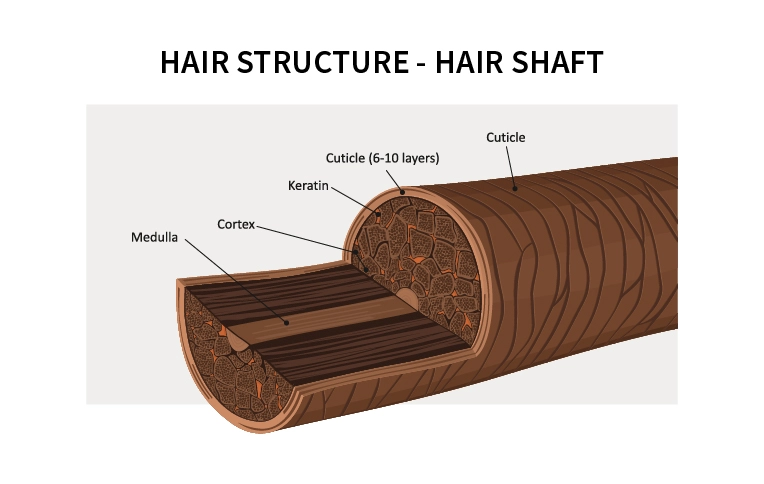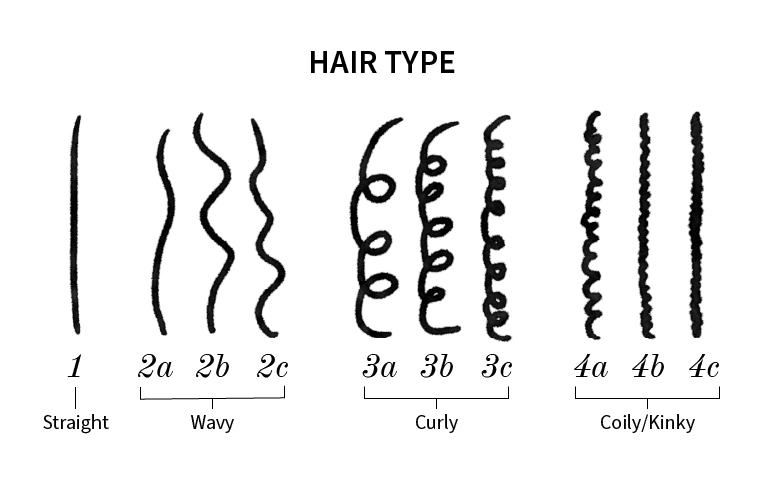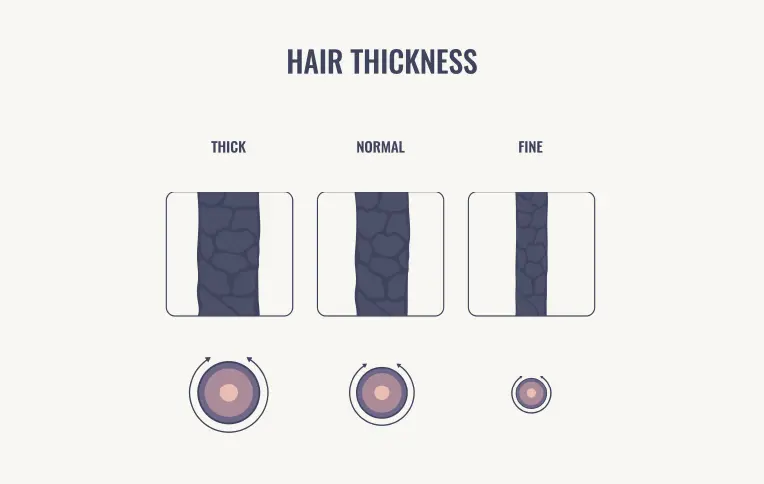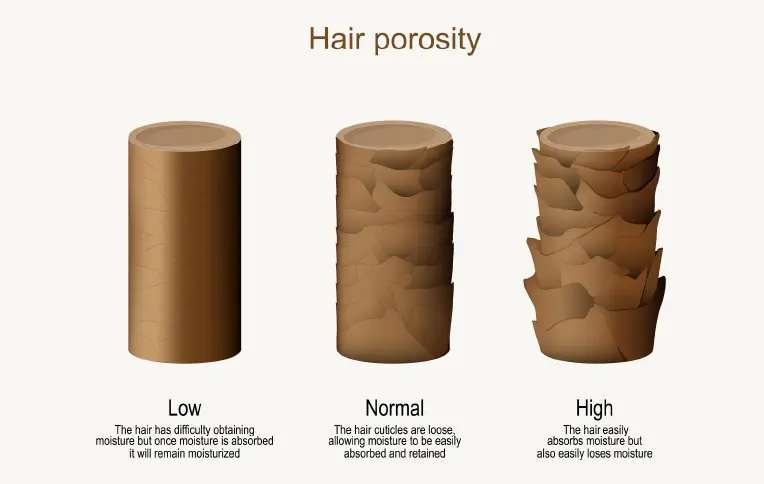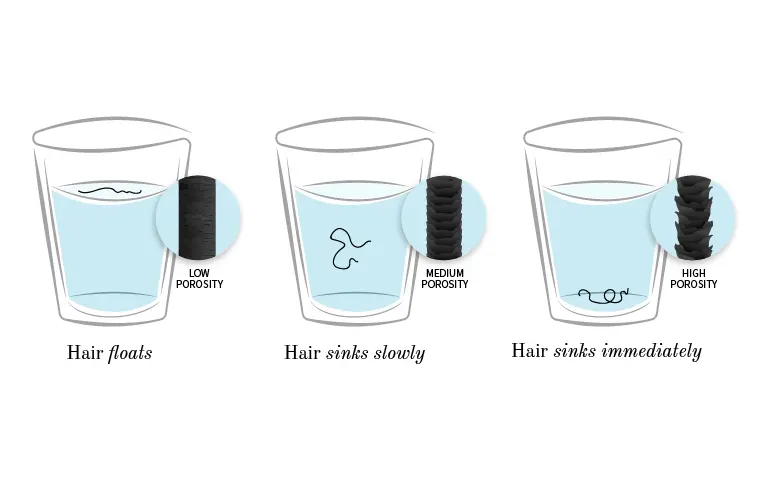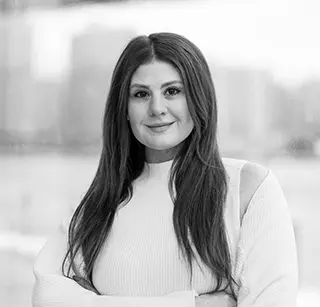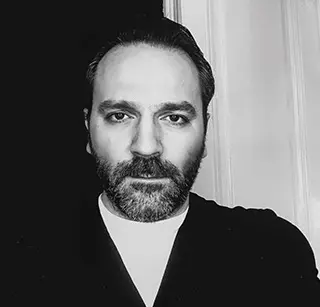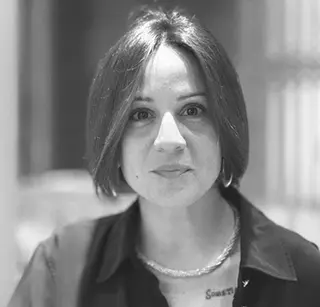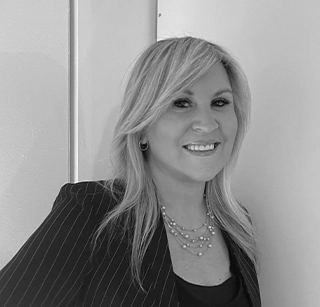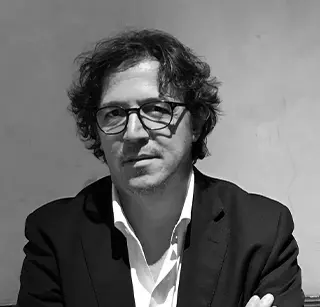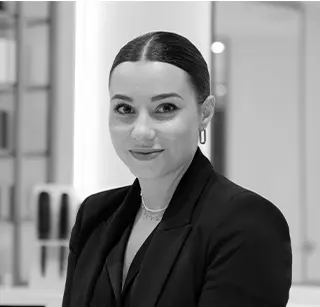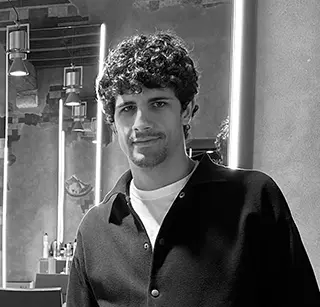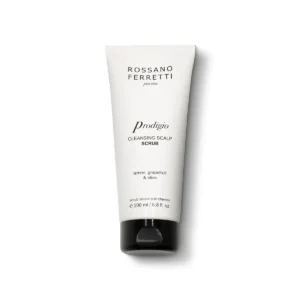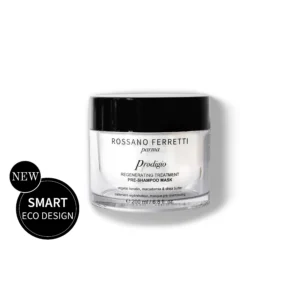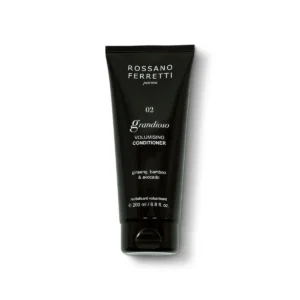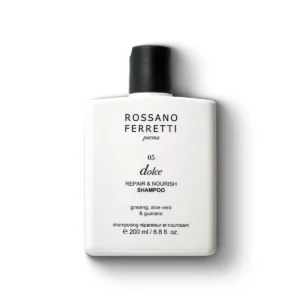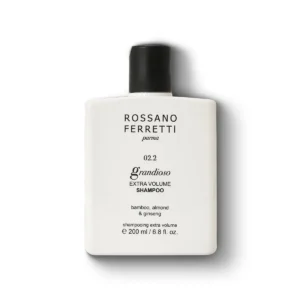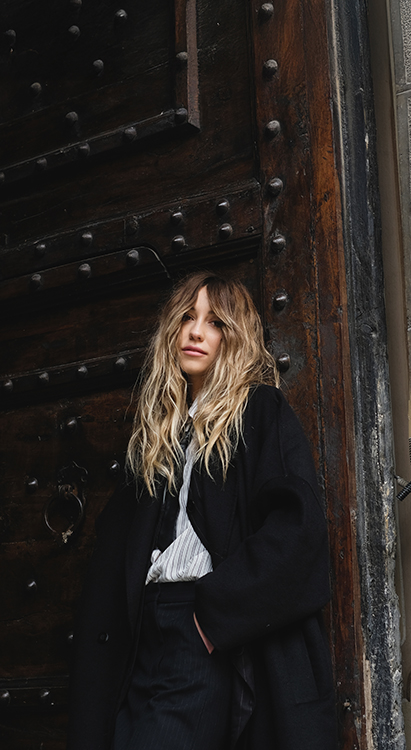How to Identify Your Hair Type, Texture & Porosity



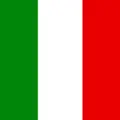
If you’ve been using luxury haircare products without seeing premium results, it could be that you’re not matching the right formulas with your hair type.
Much like understanding your skin type is important for implementing an effective skincare routine, figuring out what type of hair you have can play a huge role in helping you to reach your hair goals.
Now, by just looking at your hair you’ll be able to recognise some obvious characteristics. For example, is it straight, wavy, curly, or coily? However, there are a few other factors to consider in pinpointing your unique hair type.
Below is everything you need to know to understand hair types and textures, and exactly define your hair. The important, technical information and jargon has been broken down in to easy-to-understand bitesize chunks to help you become more knowledgeable and an expert in how best to take care of your own hair type and texture.
In this Article:
- Understanding the Basics: What Is Hair Made of – and Why It Matters
- Let’s Talk Hair Type
- Hair Thickness vs Hair Density
- Hair texture vs. Hair porosity
- Get to Know Your Scalp
- What about hair-fall and ageing hair?
1. Understanding the Basics: What Is Hair Made Of – and Why It Matters
To properly care for your hair, it’s important to understand what it’s made of and how it functions. Hair isn’t just something we style – it’s a complex biological structure influenced by genetics, health, environment, and daily habits. By knowing the building blocks of hair and the terms used to describe its health and behaviour, you can make more informed choices about the products and treatments you use.
What Is Hair Made Of?
Hair is primarily composed of keratin, a strong, fibrous protein also found in nails and the outer layer of skin. Keratin is produced by cells in the hair follicle, and as these cells move upward, they harden and die, forming what we see as the visible hair strand. Though “dead” in a biological sense, hair is still highly reactive to how you treat it—heat, chemicals, friction, and humidity all have an impact.
Each strand of hair has three main structural layers:
- Cuticle – The outermost layer made of overlapping, transparent cells. A healthy cuticle lies flat, giving hair a smooth, shiny appearance and protecting the inner layers.
- Cortex – The middle layer, where keratin fibres and melanin (natural pigment) are stored. This layer determines your hair’s strength, elasticity, and texture.
- Medulla – The innermost layer, often hollow or absent in finer hair. It plays a minimal role in hair health but is present in thicker or coarser strands.
Key Hair-Related Terms to Know
- Hair Shaft: The visible part of the hair that extends from the scalp. It is made of dead keratinised cells and includes the cuticle, cortex, and sometimes the medulla. This is the part of the hair that you wash, style, and treat.
- Hair Fibre: A single strand of hair. In a broader context, the term may also refer to the collective quality of hair strands—such as their strength, diameter, or behaviour when exposed to different conditions.
- Sebum Production: Sebum is a natural oil secreted by the sebaceous glands in the scalp. It coats the hair shaft, keeping it lubricated, shiny, and protected from dryness. Balanced sebum production is essential for a healthy scalp and hair, while overproduction can lead to greasiness and underproduction can cause dryness and brittleness.
- Elasticity: This refers to hair’s ability to stretch and return to its original length without breaking. Healthy hair has high elasticity, which indicates good moisture and protein balance. To test this, gently stretch a wet strand—if it stretches and bounces back, it’s elastic; if it snaps, it may need more moisture or protein support.
- Porosity: Though not always visible, porosity is another key factor. It refers to how well your hair absorbs and retains moisture, depending on the condition of the cuticle. Hair can be low, normal, or high porosity, which affects how it responds to hydration and styling products. More on this further in the article.
Why This Knowledge Is Important
When you understand what your hair is made of—and how factors like elasticity, sebum, and porosity interact—you can better identify what it needs. For example:
- Dry, brittle hair may be lacking moisture or essential oils due to low sebum production or raised cuticles.
- Limp or weak hair may benefit from protein-rich treatments to reinforce the keratin in the cortex.
- Overly frizzy or dull hair may require cuticle-smoothing conditioners or protective oils to restore shine and manageability.
In short, the more you understand your hair’s structure and behaviour, the more effective your hair care routine will be—leading to healthier, more beautiful results over time
2. Let’s talk hair type
The next time you wash your hair, allow it to air-dry without any products in it. This will help you to define the natural shape or pattern of your strands.
You can use the following as a guideline:
- If your hair dries straight without a bend or curl, then you have straight hair (hair type 1).
- If your hair dries with a slight curve or “S” shape, then you have wavy hair (hair type 2).
- If your hair dries with a defined curl, then you have curly hair (hair type 3).
- If your hair dries to form tight curls or spirals, then you have coily hair (hair type 4).
Each hair type deserves a ritual that enhances its natural beauty. Curly and coily hair types often need more hydration and definition, while straight and wavy hair types may benefit from volume-boosting or smoothing treatments.
To better understand your hair type’s needs, it’s useful to go a step further and identify your hair subtype using the A-B-C classification system. Each main type (1 to 4) is further divided based on the thickness of the strand and the tightness or looseness of the wave, curl, or coil.
Type 1: Straight Hair
Straight hair reflects the most light, giving it a naturally glossy appearance. It tends to be more resistant to styling but is often lower in frizz.
- 1A: Very fine, soft, and completely straight
- Care Tips: Avoid heavy products that can weigh hair down. Use lightweight volumising shampoos and dry shampoos to add lift.
- Description: Slippery, thin strands that don’t hold curls easily. Often gets oily quickly.
- Where It’s Common: Predominantly found in East Asian populations, especially Japan, Korea, and China.
- 1B: Straight with a bit more body and slight volume
- Care Tips: A light mousse or sea salt spray can help build texture. Volumising conditioners are ideal.
- Description: Thicker than 1A, with more structure and movement. Can hold styles slightly better.
- Where It’s Common: Found in many Asian and Caucasian groups, including Northern Europe and Central Asia.
- 1C: Straight but coarse and thick, with a hint of wave
- Care Tips: Smoothing serums or light oils help control frizz. Regular hydration is key to manage texture.
- Description: Resistant to curling or shaping but can become frizzy. May show a slight wave in humid weather.
- Where It’s Common: Seen in Mediterranean, Middle Eastern, and some Indigenous American hair profiles.
Type 2: Wavy Hair
This type lies somewhere between straight and curly, offering a versatile texture that can lean toward smooth or voluminous depending on styling.
- 2A: Fine and loose “S” shaped waves
- Care Tips: Avoid heavy styling products. A light curl enhancer or leave-in conditioner will boost definition.
- Description: Flat at the roots with soft waves that begin at mid-length. Easily straightened or curled.
- Where It’s Common: Often seen in European descent, especially Western and Southern Europe.
- 2B: More defined waves with some frizz
- Care Tips: Use anti-frizz sprays or smoothing serums. Diffusing while drying enhances natural texture.
- Description: Medium-textured hair with more visible “S” patterns starting closer to the roots.
- Where It’s Common: Common in mixed-ethnicity individuals and Mediterranean populations.
- 2C: Thick, coarse waves that verge on curly
- Care Tips: Moisture-rich shampoos and deep conditioning masks help tame frizz. A curl cream helps define the wave.
- Description: Dense, voluminous waves with potential for loose curls. Prone to frizz in humidity.
- Where It’s Common: Found in Latin America, Southeast Asia, and mixed-heritage communities.
Type 3: Curly Hair
This hair type forms distinct, springy curls and tends to be drier due to its structure, which makes it harder for natural oils to travel down the hair shaft.
- 3A: Loose, well-defined spiral curls
- Care Tips: Use curl-defining creams or light gels. Avoid sulphates and silicones to prevent buildup.
- Description: Soft, shiny curls with large, well-formed spirals about the size of a highlighter pen or your thumb.
- Where It’s Common: Found in people of mixed African, Latin American, and Mediterranean descent.
- 3B: Springy ringlets from tight to corkscrew shape
- Care Tips: Hydration is essential – opt for rich creams and co-washing routines. Finger-coiling can enhance shape.
- Description: Tighter curls with more volume and less natural shine than 3A. Texture varies across the head.
- Where It’s Common: Frequently seen in African American, Afro-Caribbean, and Brazilian populations.
- 3C: Very tight curls with a lot of volume
- Care Tips: Use ultra-moisturising leave-ins and protective styles. Avoid excessive brushing to maintain curl clumps.
- Description: Dense, highly textured curls about the width of a pencil. Lots of body and shrinkage.
- Where It’s Common: Found in individuals of African descent, often mixed with Latin or Caribbean heritage.
Jargon explained:
‘Shrinkage’ refers to the way curly or coily hair appears shorter than it actually is when dry, due to the natural curl pattern contracting as it loses moisture.
‘Co-washing’, short for “conditioner washing,” is the practice of cleansing the hair using a conditioner or a specially formulated cleansing conditioner instead of shampoo to maintain moisture and reduce dryness.
Type 4: Coily Hair
Coily or kinky hair is the most delicate and tightly textured. It has a zig-zag pattern or tight coil and often experiences the most shrinkage.
- 4A: Soft coils with a defined “S” pattern
- Care Tips: Emollient-rich products, like shea butter or avocado oil, help retain moisture. Stretch styles (like twist-outs) reduce tangling.
- Description: Defined coils that are springy and soft. Retains some moisture and curl definition.
- Where It’s Common: Common in African and African-American hair, especially in West and Central Africa.
- 4B: Z-shaped curls with less definition
- Care Tips: Apply heavy creams and butters. Protective styles like braids or bantu knots help prevent breakage.
- Description: Hair bends in sharp angles like the letter “Z,” with little natural curl definition. Very fragile.
- Where It’s Common: Found throughout Sub-Saharan Africa and in the African diaspora globally.
- 4C: Very tight, densely packed coils with maximum shrinkage
- Care Tips: Requires intensive moisture routines, minimal manipulation, and frequent deep conditioning. Detangle with fingers or wide-tooth combs.
- Description: The most fragile hair type. Coils are almost invisible without manipulation. Shrinks up to 75% of actual length.
- Where It’s Common: Predominantly seen in people of African descent, especially West Africa and Afro-Caribbean heritage.
Identifying your hair type can help you choose the most suitable treatments, styles, and products. Whether your strands are silky straight or tightly coiled, embracing your texture is the first step toward healthier, more radiant hair.


Tip: Don’t confuse hair type with texture. Your hair can be curly and fine, or straight and coarse—more on that below.
3. Hair Thickness vs Hair Density
When we talk about the appearance of your hair, two important factors come into play: thickness and density. They’re often confused, but they describe very different things.
- Hair Thickness refers to the diameter of each individual strand. Is your hair fine, medium, or coarse?
- Hair Density refers to the number of strands on your head. Do you have naturally sparse hair, or does your scalp feel full?
How to determine your thickness:
Hair thickness refers to the diameter of your hair strands, which generally falls into 3 categories:
- Fine/thin
- Medium
- Thick
The thickness of your hair type will affect how well it will hold styles and react to certain products.
A quick and easy way to see which category your hair falls into is to take a strand of your hair and lay it next to a piece of sewing thread. If your strand is thinner than the sewing thread, then you have thin (fine) hair. If it’s thicker than the thread, your hair will fall into the thick (coarse) category. Anything in between them would be medium.
You will also find that fine hair types can’t hold curls very well whereas medium hair is relatively easy to style and can hold curls for a longer period. Thin to medium strands can be easily volumised with the right styling routine and targeted care. Thicker strands are super easy to curl, but because they are less supple, it can be tricky to style them or get them to hold their shape.
To tame coarse or curly hair types, look for deeply nourishing and softening formulas that enhance manageability. These products are created to make your strands more supple so that they can retain a defined shape.


4. Hair texture vs. Hair porosity
When it comes to understanding your hair type’s needs, two often-overlooked factors are texture and porosity. While they’re sometimes confused, they describe very different aspects of your hair — and both can greatly influence which products and treatments work best for your hair type.
Hair Texture: How Your Hair Feels and Behaves
Hair texture refers to the overall feel and surface quality of your hair strands — not the curl pattern or thickness. It describes how your hair behaves day-to-day and how it reacts to styling, touch, and the environment.
Common texture traits include:
- Silky or smooth
- Coarse or rough
- Frizzy
- Elastic or stretchy
These qualities impact how manageable your hair is, how prone it is to tangling or breakage, and how well it responds to styling.
Hair Porosity: How Your Hair Absorbs and Retains Moisture
Hair porosity isn’t visible and is therefore often overlooked as a key factor in determining hair condition and needs. However, knowing your hair’s porosity can be a game-changer in determining which products you should be putting on your hair for effective results.
But what is “porosity”?
Porosity refers to your hair’s ability to absorb and hold onto moisture and products.
To discover what kind of porosity your hair type is, you can do the following simple experiment:
Place a single strand of hair into a glass of water.
- If it sinks to the bottom, your hair has high porosity (which means it soaks in a lot of moisture).
- If your hair sinks but doesn’t touch the bottom of the glass, it has well-balanced porosity (which means that it absorbs just enough moisture to keep it healthy).
- If your hair floats on top of the water, it has low porosity (which means it does not absorb moisture easily).
Now, you’d think that hair with high porosity would be ultra-moisturized all the time. But this is not the case. This type of hair absorbs moisture quickly because of gaps or tears around the cuticle. This means that it loses moisture just as fast as it absorbs it. The result is dry, brittle hair that’s prone to breakage.
What do I do if I have hair with high porosity?
If you fall into this category, we suggest that you avoid heat styling as often as possible. Products with harsh chemicals are also a “no” because they can continue to dry out your hair. Instead look for natural deep-hydrating hair masks, hair oils, and leave-in treatments that will infuse your locks with moisture while sealing the cuticle to prevent moisture from seeping out again.
What do I do if I have hair with low porosity?
If your hair has low porosity, it means that your cuticles are blocking moisture from seeping into your strands, and you will need to use a product that helps moisture move through the shaft.
Look for deeply hydrating formulas enriched with ingredients like hyaluronic acid and keratin—these help draw moisture in and encourage it to absorb more effectively into the strand. Lightweight creams, milks, or serums that can infuse moisture without weighing hair down are ideal. Consistency is key, so incorporate hydrating treatments regularly to support elasticity and softness.
5. Get to know your scalp
The fact is, if your scalp isn’t in good shape, then your hair won’t be either. So, never ever underestimate the power of good scalp care!
To see what type of condition your scalp is in, we suggest that you inspect it the day after a wash. If your roots appear lifeless and greasy, then you most likely have a scalp that’s prone to oiliness. If this is the case, a deep cleansing scalp scrub may be just what you need to remove impurities, product build-up, and excess oils.
If you find that your scalp flakes, chances are that it’s dry and in need of nourishment. A flaky scalp can also often be quite sensitive, so you’ll need to be gentle in your approach. We suggest a sulphate-free hydrating shampoo that will clean your hair and scalp without stripping it of natural nourishing oils.
But what if my scalp is both oily and flaky?
It’s more common than you think. Often, this combination is caused by product buildup, excess oil, and infrequent or incorrect cleansing. The best approach is a balanced routine that includes a clarifying yet non-aggressive exfoliant to remove impurities, paired with a nourishing pre-wash or treatment oil to soothe and restore harmony to your scalp and hair.
6. What about hair-fall and ageing hair?
Ageing hair and hair-fall tend to be classified as conditions more than hair types. Nonetheless, if your hair falls into one (or both) of these categories, it will help to pair your locks with products that will nurture them.
If your hair feels more fragile than it used to or you’re experiencing increased shedding, it’s important to adopt a nurturing routine focused on strengthening and revitalising the strands. Look for treatments rich in antioxidants, vitamins, and naturally rejuvenating actives that support a healthy scalp and improve resilience over time. Regular use can help reduce breakage, improve thickness, and restore vitality to mature or depleted hair.
There is no one-size-fits-all when it comes to haircare. And that’s the beauty of it. With the right understanding and the right ritual, your natural hair type — whether fine or full, wavy or wild — becomes your signature.
As Rossano himself often says:


If you’re still unsure about your hair’s type, texture, porosity or needs, we invite you to book a consultation at one of our salons. Our expert stylists — trained in the renowned Ferretti Metodo philosophy — will carefully study your hair and help you discover the ritual that’s right for you. Prefer to connect from home? Our customer care team is always available and happy to offer personalised guidance.


